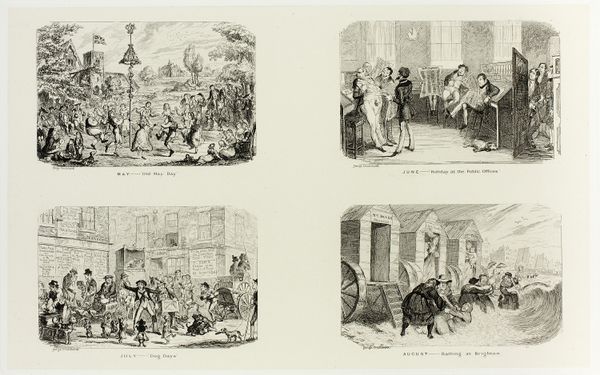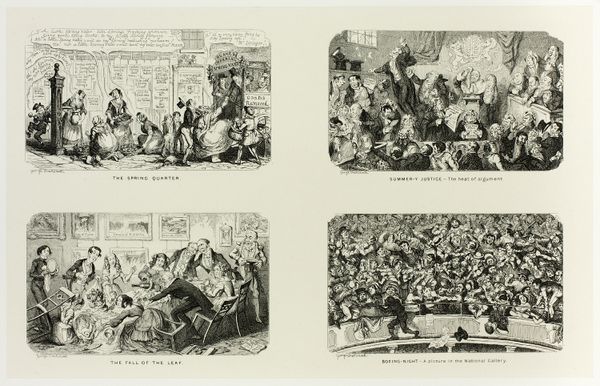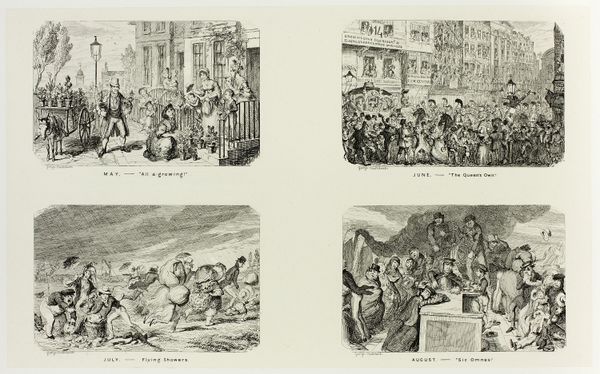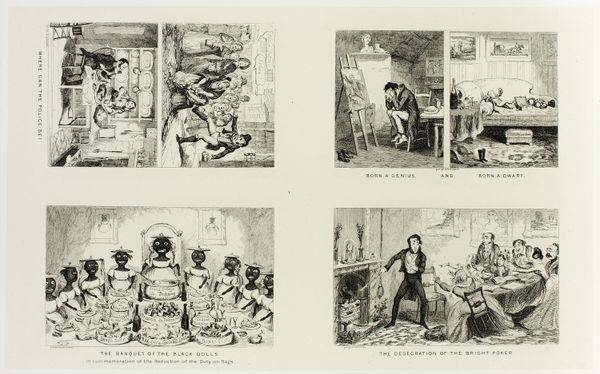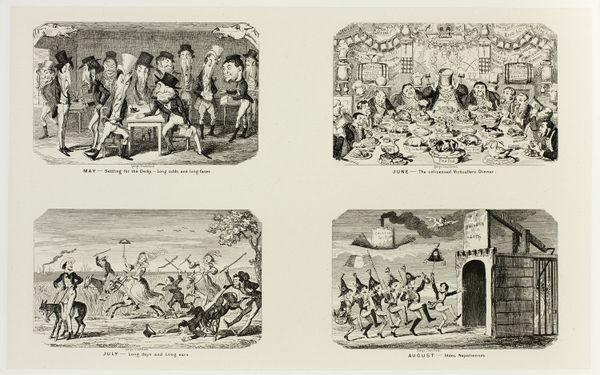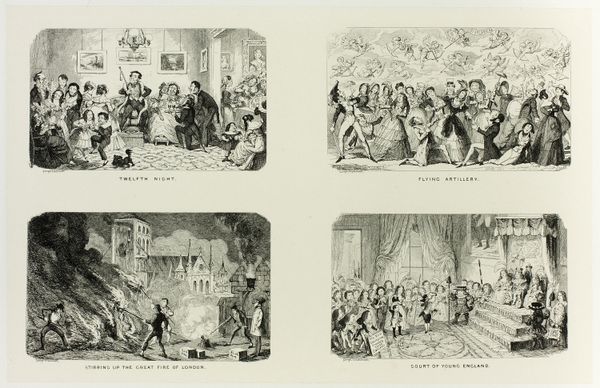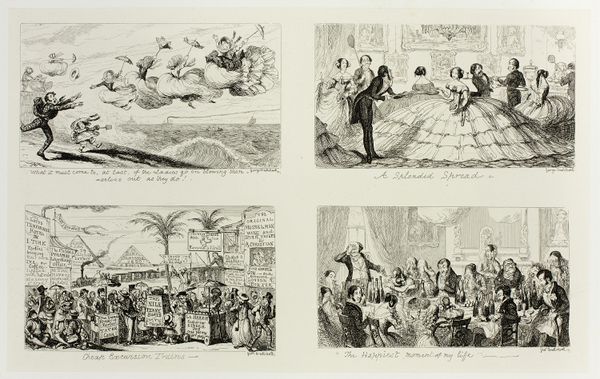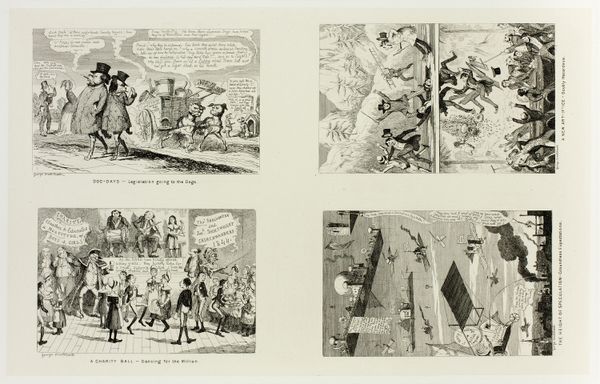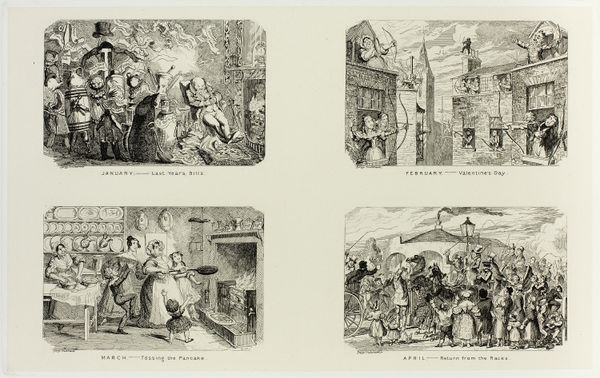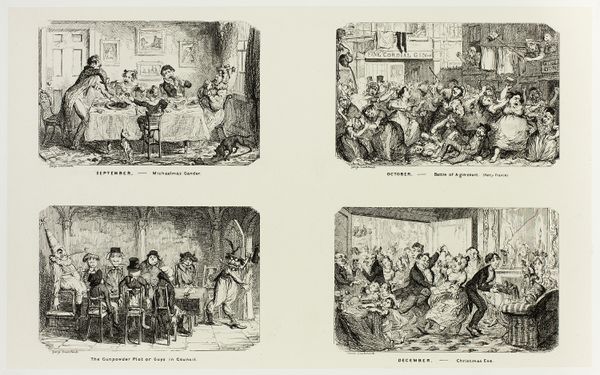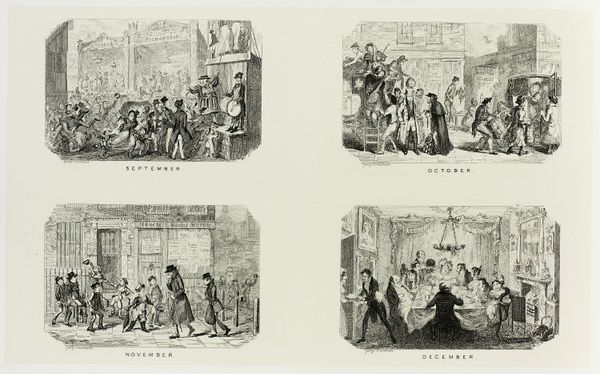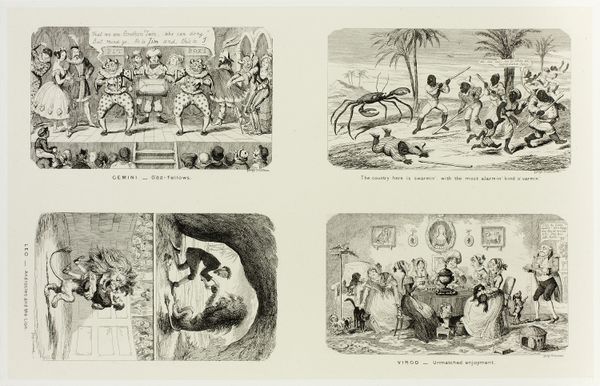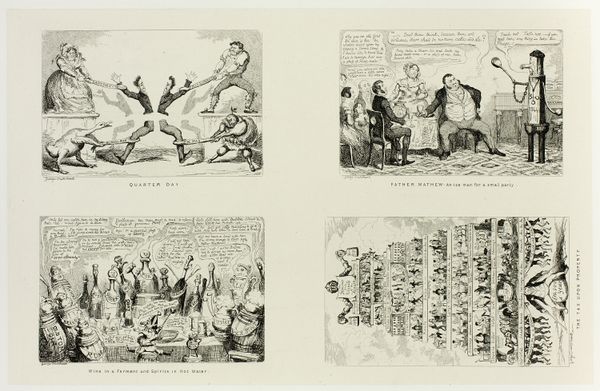
Aquarius - Jolly Young Watermen from George Cruikshank's Steel Etchings to The Comic Almanacks: 1835-1853 (top left) c. 1846 - 1880
0:00
0:00
Dimensions: 214 × 338 mm (primary support); 343 × 509 mm (secondary support)
Copyright: Public Domain
Editor: So, this is "Aquarius - Jolly Young Watermen" by George Cruikshank, dating somewhere between 1846 and 1880. It's an etching, and it definitely has a lively, almost chaotic energy to it. What kind of symbols do you think Cruikshank is playing with here? Curator: The energy you feel, the chaotic composition, stems from its roots in the carnivalesque. Think back to those ancient celebrations, reversals of power, playful chaos, a release of social tensions through symbolic acts. Here, the watermen aren't just spraying water; it's a ritual cleansing, perhaps even a baptism – but turned upside down, a comic, rebellious gesture. What societal norms do you imagine Cruikshank is subtly poking fun at with this exaggerated water display? Editor: I guess it could be about critiquing the upper classes, making fun of their rigid social rules and maybe even hygiene habits? But, like, through water fights? Curator: Exactly. Water, traditionally a symbol of purity and cleansing, becomes a weapon of joyful anarchy. It is about more than just the upper classes. It is about a momentary escape from social constraints, a temporary subversion. Notice how the figures seem to be caught in a moment of surprise, some joyful and others less so. What do their expressions tell you about their relationship to the established order? Editor: That some people are annoyed by the interruption? Almost as if to imply society isn't necessarily interested in being cleansed. Curator: Precisely. And that's where the enduring power of symbols lies: they reflect our own shifting interpretations, mirroring the continuous negotiation between tradition and rebellion. Seeing it this way, does the print gain a new, richer, perhaps even more pertinent dimension? Editor: Absolutely. I came in thinking it was just a silly scene, but there’s so much more happening beneath the surface. Thanks!
Comments
No comments
Be the first to comment and join the conversation on the ultimate creative platform.
